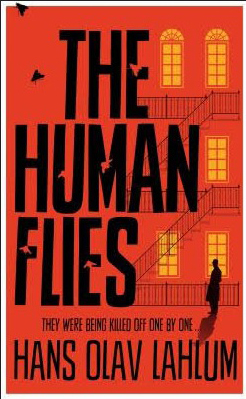Generally, it is known what a chess player earns for playing in a tournament. The first prize is listed and the appearance fee is usually enough to cover travel and a bit more, with accommodation and food often supplied by the organisers. For lower-ladder GMs such as myself, this is frequently all that is offered, although I get £300 for one tournament I frequently play and £500 for the Danish Championship.
I have always felt blessed that people pay me to play chess. I have never been a devoted professional and the organisers are usually working for free in Northern Europe, because they like chess and the sponsors are entirely philanthropic.
But there are serious players out there as well. People who make their living from playing chess. They go from open tournament to open tournament, struggling to make ends meet.
The best players go from this nomadic existence to a super-league of highly-paid tournaments. In his interview about Norwegian Chess, Topalov explained his relaxed attitude to chess these days as “last prize is $15,000”, which is certainly a better prize than I have ever received…
I talked to a top 20 player once, who said he got £5000 in appearance fee for his latest tournament, but rushed to tell me that this was of course very, very good. Life outside the top tournaments is doable, but it is not gilded.
But what about Magnus Carlsen, World Champion, fashion icon and national hero? Surely this must be good business? Obviously, we would never be able to find out what Anand, Kramnik and Topalov earn, as they live in countries where such information is not easily accessible. But Carlsen lives in Norway, where everything is out in the open.
In an article in Verdens Gang, a major Norwegian tabloid, we can see that Carlsen had an income of €108,000 in 2014. But this is not the whole story of course. This is the dividends he has released from his company for personal usage. Being Norwegian, he will have seen half of it evaporate immediately… Not an expensive lifestyle.
But the company MagnusChess made a profit of €1.1 million after everyone had been paid and all the trips and camps and so one had been accounted for. Magnus owns 85%, his father 15%. The company is also 54% shareholder in the app MagnusChess, which apparently is estimated as worth €8.6 million, although I am always highly sceptical of these high evaluations of IT companies, as they so frequently have disappointed once they had to make money…
Carlsen has also recently bought a 5000 square-foot property in a fashionable part of Oslo, but apparently not to live in, but for training camps and other chess-related affairs. Valued at €2.48 million, Carlsen paid €2.11 for it. No doubt a good investment for the future.
So what can we learn from this? Carlsen has a good manager in Espen Agdestein who is able to make the World Champion a millionaire on his talent. Magnus the business is well run, but Carlsen does not seem to be caring too much about money. His private income is like that of a school principal in the UK with a higher tax (56% in his case) and the infamous high living costs in Norway. Carlsen has a lot of his lifestyle paid for by his company; the travelling, the helpers, the hotels. But once he is at home, his income is about double the Norwegian average of €46,200, once corrected for tax.
Hans Olav Lahlum is both a chess expert and a successful crime writer. In Tromso we exchanged books:



It’s a bit weird to call the 108,000 his “income”. After all, this is not what he earns, it’s what he spends.
Interesting point about the MagnusChessapp. I always thought they sold a rather simple product under Carlsen’s name, which strikes me as a decent money making scheme, but now I see that the app is actually free. How do they make money?
@Phille
You buy to register, I think. It is a relatively simple product, but also great!
The dividends is what a personal income is. The other part is maybe an increase in net worth. This is the standard way to deal with these things. Also, to call it his spending is not accurate, as the house, the car (Tesla), the trips (five star hotels) and so on are all company spending. But he does not seem especially interested in material goods…
Interesting blog post. So Magnus got this house almost for free?! What does the table with the 7 people mean?
Andre: The table with 7 people is an overview of the seven best-earning chess players in Norway, based on official numbers for 2014 from the tax directorate. In Norway, tax and income figures for the whole population are public for everyone to see, though you have to log in with the Norwegian equivalent of your SSN to see others’ figures, thus enabling everyone who is looked at to know who’s been looking at them.
Explanation of the list: The second column (inntekt) is income, the third (formue) is their registered fortune, and the fourth (skatt) is the amount of taxes they paid – all in NOK, of course.
The headings are Person, Income, Wealth, Tax
His company owns the house.
Thanks guys!
@Jacob: What I meant is that the price for the house went down from €2.48M to €2.11 (not million). That’s either a hidden gift to Magnus or a typo in the article. 😉 If you meant €2.11M it seems like a normal discount negotiated by Magnus’ management. There can be a dozen reasons why somebody would sell for ca. 15% off instead of trying longer.
@Andre
The valuation was probably wrong and Magnus got a bargain because Norway is awfully short of really really rich people, with most guys being somewhere in the middle…